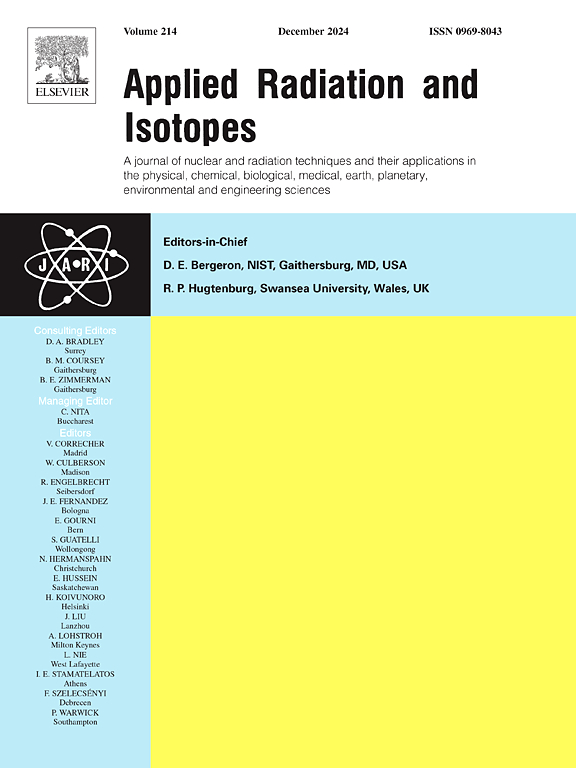Radon progeny: Behaviour and influencing factors in indoor and outdoor environment
IF 1.6
3区 工程技术
Q3 CHEMISTRY, INORGANIC & NUCLEAR
引用次数: 0
Abstract
Radon progeny are the major contributor to inhalation dose to humans from natural sources of radiation. In addition, they are also used as tracers to study atmospheric phenomena. This makes it important to study the behaviour of Radon Progeny in both indoor and outdoor environment. In the present study, the progeny concentration, Radon gas concentration, unattached fraction are continuously measured for a period of 1 year in a ground floor room in Mumbai, both indoor and outdoor. The hourly average data for all months gave a clear picture of the diurnal and seasonal variation in progeny activity concentrations, unattached fractions and equilibrium factor in both environments. Average progeny concentration in the indoors was measured as ∼2–3 times higher that in the outdoors. The progeny activity in the outdoor environment was minimum in the rainy season (3.6 ± 1.2 Bq m−3), whereas that in indoors was minimum in summer season (7.5 ± 2.9 Bq m−3). Equilibrium factor in the indoor was obtained as V-shaped behavior with a minima in the afternoon, which was contrary to the inverted V-shaped measured in the outdoors. The night-time and day time variations highlight the influencing factors, like temperature, humidity, rainfall and turbulence.
求助全文
约1分钟内获得全文
求助全文
来源期刊

Applied Radiation and Isotopes
工程技术-核科学技术
CiteScore
3.00
自引率
12.50%
发文量
406
审稿时长
13.5 months
期刊介绍:
Applied Radiation and Isotopes provides a high quality medium for the publication of substantial, original and scientific and technological papers on the development and peaceful application of nuclear, radiation and radionuclide techniques in chemistry, physics, biochemistry, biology, medicine, security, engineering and in the earth, planetary and environmental sciences, all including dosimetry. Nuclear techniques are defined in the broadest sense and both experimental and theoretical papers are welcome. They include the development and use of α- and β-particles, X-rays and γ-rays, neutrons and other nuclear particles and radiations from all sources, including radionuclides, synchrotron sources, cyclotrons and reactors and from the natural environment.
The journal aims to publish papers with significance to an international audience, containing substantial novelty and scientific impact. The Editors reserve the rights to reject, with or without external review, papers that do not meet these criteria.
Papers dealing with radiation processing, i.e., where radiation is used to bring about a biological, chemical or physical change in a material, should be directed to our sister journal Radiation Physics and Chemistry.
 求助内容:
求助内容: 应助结果提醒方式:
应助结果提醒方式:


